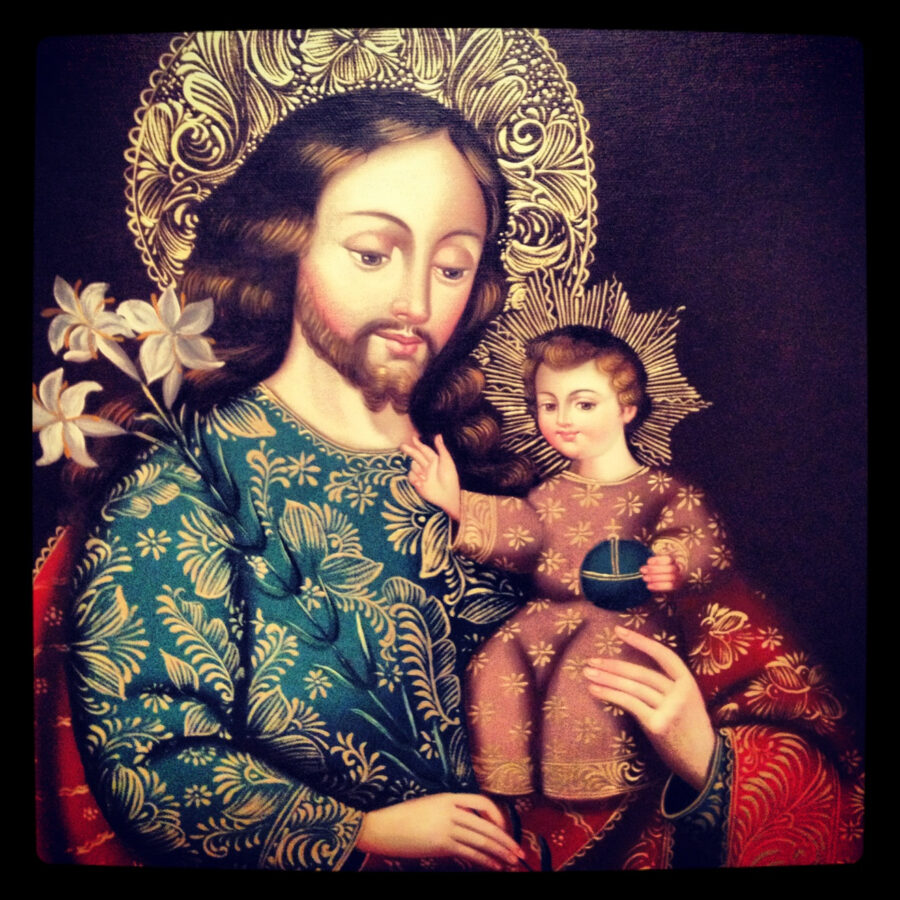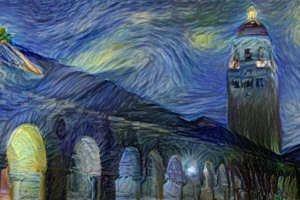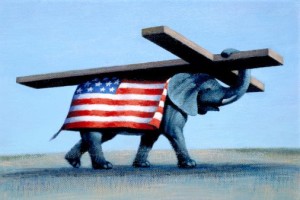Anyone who’s come over for dinner has seen my collection of Peruvian oil paintings of the Virgin Mary. Several years ago, a spending spree and newfound obsession with Catholic art (despite being a Reformed Baptist) landed me with a few too many Marys: three hanging in the hallway and one above my bed. Buyer’s remorse aside, they’re gorgeous. Several of them depict the virgin mother cradling the infant Jesus—a beautiful, visual reminder of the miracle that is Christmas.
So, um, what ever happened to Joseph?
A piece of the Christmas story was missing, and not only from my art collection. In the culture at large, Mary is the costar of the Christmas story. Not only does her image grace a thousand greeting cards, she also appears in Christmas hymns that pass over Joseph entirely (think “Silent Night”). But she also has a bigger role in the biblical narratives. Luke’s gospel is very Mary-centric, likely because she was his primary source. He even includes the Magnificat, a Mary-penned song that choirs still sing today. Mary also shows up in both the Old Testament (Isaiah 7:14) and the Book of Acts (1:14). And according to some devout Catholics, she even shows up today in stains, clouds and burnt toast.
Then there’s Joseph.
We really don’t know much about him. Luke refers to him on a few occasions, mostly in connection to Mary, and hints that he was poor, offering up two doves instead of a lamb at the temple. In John’s account, Philip calls Jesus “the son of Joseph” but we never hear his name again (and commentaries don’t waste any ink explaining it). Mark doesn’t even mention him. Matthew, the most Joseph-friendly of the four gospels, paints Joseph as a godly man—faithful, obedient and “just” (1:19). He kicks off the Christmas story with Joseph’s genealogy, the line through which the Messiah would come, and the angel calls him “son of David” (1:20). In Matthew 13:55, we learn also that he was a carpenter (or a stonemason, depending on which scholar you talk to.) In all four gospels, Joseph never speaks; in fact, he simply disappears. Our best guess is that he’s dead by the time of Christ’s crucifixion, since John is left to care for Mary.
Besides that, we’re in the dark when it comes to Joseph. That’s all that the gospel writers thought necessary, and for good theological reason. If they were faithful to history, and I believe they were, then they rightly downplayed Joseph’s role to better illustrate Jesus’ devotion to his heavenly Father.
Take Luke 2 for example. After a frantic three-day search for their lost son, Mary (not Joseph) says to Jesus, “Behold, your father and I have been searching for you in great distress.” The 12-year-old boy replies, “Why were you looking for me? Did you not know that I must be in my Father’s house?” When Mary refers to Joseph as father, Jesus claims he’d been with his Father all along. From an early age, Jesus makes a clear distinction between his earthly father and his heavenly Father.
Then there’s Matthew 12. As Jesus is speaking to the crowd, his mother (here we go again with Mary!) and brothers ask to speak to him. “Here are my mother and my brothers,” Jesus replies, pointing not to his family, but to his disciples. “For whoever does the will of my Father in heaven is my brother and sister and mother.” Twenty years after the temple incident, Jesus makes the same point: his Father is in heaven, and his family is whoever loves his Father. Not that Jesus didn’t love and honor his earthly parents, but at this point in his ministry, there’s no mistaking: Jesus is the spitting image of his Father, he’s devoted to his Father, he’s passionate about his Father. And he ain’t talkin’ about Joseph.
Joseph is MIA. The gospel writers have left him in the dust. But that doesn’t mean he wasn’t a good man—and the walls of my home still felt a little empty without him. So now, in the hall near my bedroom, centered over a wooden table, you’ll see the last painting in my collection: a portrait of Joseph and the infant Jesus. No Mary. Just Joseph and Jesus. Two men with the same Father.
I’m happy to say he’s my Father, too.





2 Comments
Leave your reply.